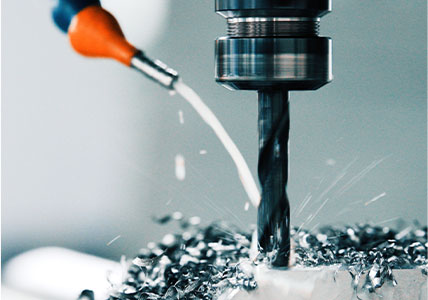CNC machining is a manufacturing process widely used for metal and plastic parts. It is known for its precision, repeatability, and ability to produce durable parts from solid materials. Therefore, both small and large, simple and complex components can be manufactured using numerical control machining. Below are some electronic components manufactured through numerical control machining.
PCBs are a fundamental feature of almost all electronic products. PCBs are used to electrically connect various parts of electronic devices using conductive tracks and other features, usually made through etching. The conductive components of PCBs are typically made of copper, while the underlying flat boards are made of non-conductive materials.
Etching is the most widely used method for manufacturing PCBs. However, it is not always the most practical, unlike machining of parts. This is because etching involves hazardous chemicals. Therefore, it should not be used in office and other non-industrial workspaces. This is where numerical control machining of electronic parts comes into play. Like etching, it can be used to engrave functional PCBs. AI CNC machining of electronic parts does not require hazardous chemicals. Therefore, it is a safer choice for certain work environments.
Electronic part machining is also applicable for manufacturing plastic or metal casings used as enclosures for electronic devices. These casings and enclosures can also be manufactured using casting or other tool-based processes. However, numerical control machining of electronic parts offers the advantage of high precision and tight tolerances, essential for consumer product casings with minimal surface defects.
Electronic devices such as smartphones, digital cameras, and laptops require aesthetically pleasing and durable enclosures that house the device's circuits and hardware. Many manufacturers use stamping mold processes to manufacture these parts, but the advantages of electronic part machining facilitate complex designs and more professional surface treatments.
Many electronic devices, including computers, require heat sinks. Heat sinks are passive heat exchangers that absorb heat generated by electronic components and transfer it to air or a liquid coolant, dissipating the heat from the device to prevent overheating and ensure proper functioning.
Electronic part machining is an ideal choice for manufacturing heat sinks, even when the electronic parts are sometimes very small in size. Numerical controlled machines have specific advantages in heat sink construction, such as creating unconventional fin patterns. Most machined heat sinks are made of aluminum or copper alloys. However, other possible materials parts include stainless steel precision parts and nickel-chromium-iron alloys ones. CNC machining of heat sinks is better suited for short-term production or rapid prototype making of electronic devices.



